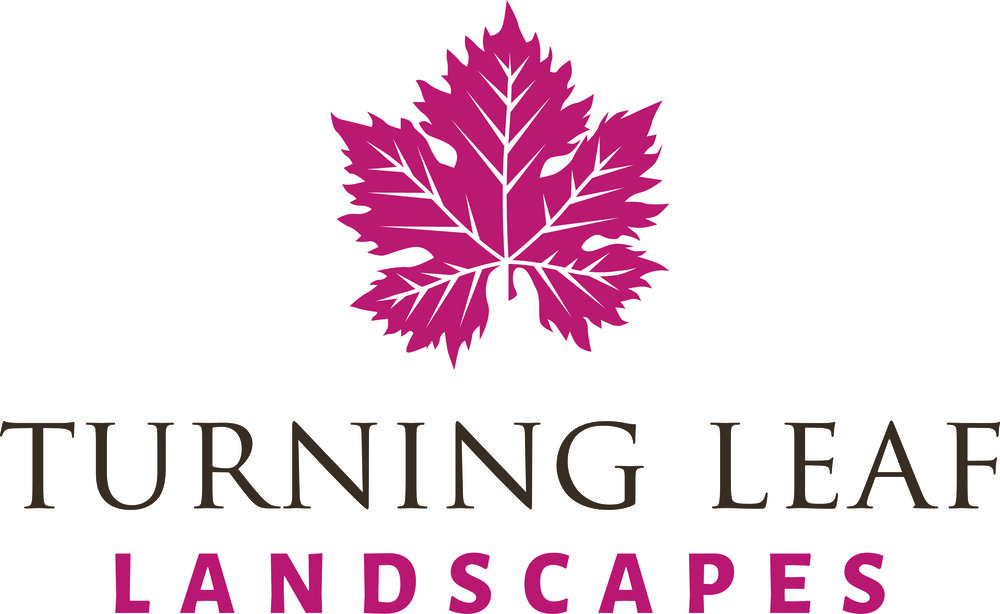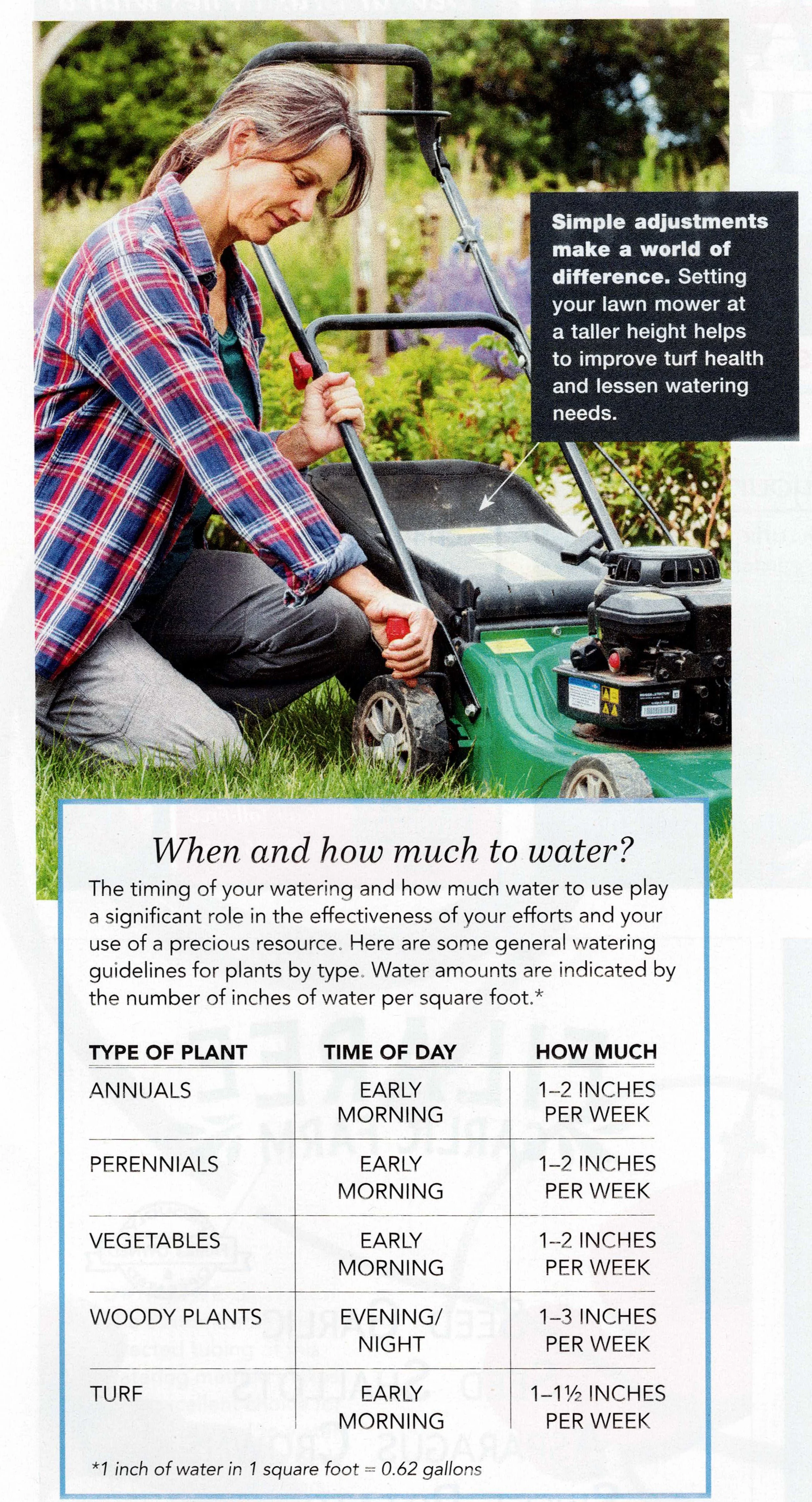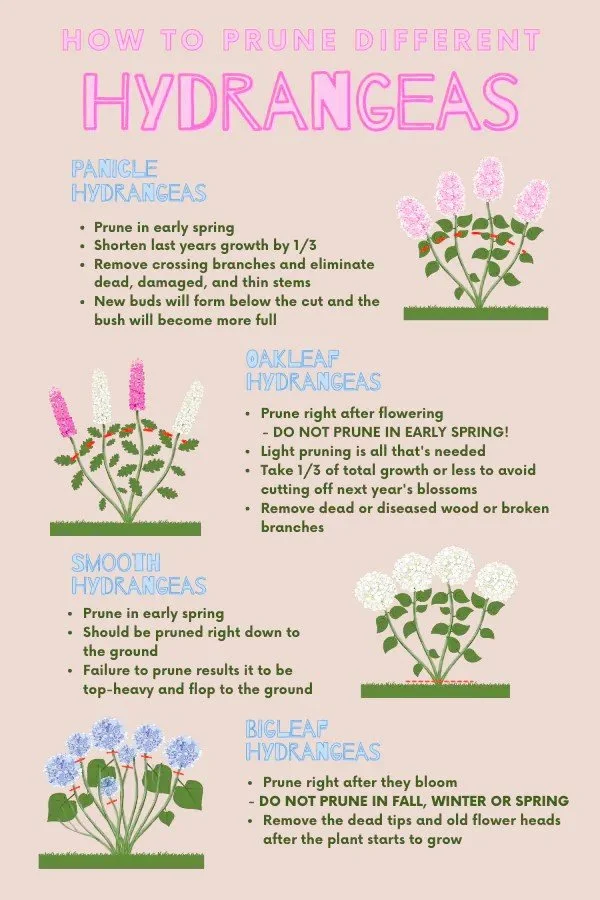Tips to help your newly planted landscape survive and thrive!
WATERING
TREES & SHRUBS
Many homeowners assume rain will provide enough water for trees. But your watering will make a huge difference in the health and survival of trees when they’re young or when the weather is dry.
Proper watering is the single most important aspect of maintenance of newly planted trees. Too much or too little water can cause damage. In the first few months after planting a tree, most of its moisture comes from the root ball. The root ball can dry out in only a day or two, even if surrounding soil remains moist.
Young trees should be watered regularly; every couple of weeks, and more often in dry weather, for at least TWO YEARS after they are planted. In times of drought, when it hasn’t rained for a month or more, even large, mature trees will need watering.
The best way to water trees is slowly for a long time, so the roots have time to absorb the moisture from the soil as it soaks down. Tree bags are also a great investment, and should be refilled every 5-7 days to be effective.
FLOWERS & GRASSES
If you don’t have a bubbler, invest in a good watering wand (not a spray nozzle you clean your car with) and hold over the top of the plant just like in the video.
PRO-TIP
Always test the soil near the base of the plant by sticking your finger about an 1” down into the soil (to your knuckle). If it comes up dirty with soil sticking to it, it’s still moist. Wait another day to water again. If it comes up dry or barely dirty, then water slowly at the base of the plant for a few minutes. WATERING THE LEAVES DOES NOTHING AND SHOULD BE AVOIDED.
SCROLL DOWN for tips & videos
Courtesy of Fine Gardening Magazine
Courtesy of Fine Gardening Magazine
Watering guide for trees & shrubs
Watering guide for flowers & grasses
MULCHING
Spread mulch under trees, shrubs, and throughout planting beds to a recommended depth of 3-4 inches for medium to coarse textured materials.
Pull mulch away from the bases of tree and shrub trunks creating a donut-hole (image on left.) NEVER pile it up against the trunk, called “volcano mulching” (image on right). Excessive mulch on the trunk causes moisture to build up, creating ideal conditions for insect pests, diseases, and decay.
Ideally, the mulched area around a tree should extend to the drip line of the branches, or at least cover a 4-5 foot diameter area around the trunk. The larger the mulched area, the more beneficial.
Check the mulch depth annually and replenish as necessary.
Proper mulching on left. Mulch should not touch the bark of the tree.
PERENNIAL CARE
After your new landscape design has been planted what are the next steps to ensure low maintenance?
Maintaining the soil is also an important on-going practice. If you put your energy into good soil, your plants will do well, with better results year after year; no time-consuming fertilizing or deadheading required!
Spread a 3-inch layer of compost over the garden soil (not the crowns of the plants) every year about mid-May, after the bulbs have bloomed and the perennials have emerged. Use shredded leaf or mushroom compost, and avoid the heavier bark products that take too long to decompose. Work the compost into the ground, either cultivating it into the existing soil or adding it when you plant in the spring.
By working that layer of compost into the soil, you eliminate the need for fertilizer that often pushes a plant to produce weak foliar growth. Many perennials are not heavy feeders. What you want to promote is a strong root system. Some gardeners prefer to compost or add shredded leaf mulch in the fall, after the perennials have been cut down and the ground is frozen. This protects plants over winter and improves the soil as it breaks down. Either can be purchased at most garden centers, or ask your landscaping crew to apply for you.
how to prune hydrangeas
Courtesy of the Gilmour, The Grumpy Gardener, Chicago Botanic Garden & Nature Hills Nursery




